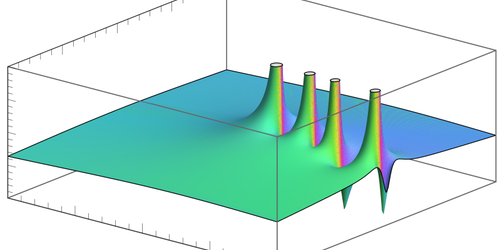A Physical Match for the Riemann Zeta Function
In 1859, Bernhard Riemann introduced a new mathematical function, which he named zeta, and showed that its properties have deep connections to the spacing of prime numbers. He also showed that in certain cases where the output of the function is zero, the input had a real part that was equal to 1/2. He famously asked whether these inputs, known as nontrivial roots, always have a real part equal to 1/2, a question (the Riemann hypothesis) that mathematicians have yet to answer equivocally. Now, Grant Remmen of the Kavli Institute for Theoretical Physics at the University of California, Santa Barbara, has proposed a way to map physical quantities of quantum systems to mathematical features of the Riemann zeta function [1]. Proving that such a system exists would offer a pathway to answering the Riemann hypothesis, as well as many other mathematical conjectures.
Remmen considered a system of colliding quantum particles. He described the particles in terms of variables that account for their energies, momenta, and trajectories in a scattering process. Using these variables, he built a mathematical function based on the zeta function. He showed that his construction had all the hallmarks of a physical amplitude—a matrix that encodes the probability that a certain set of particles are produced in a given collision. These hallmarks include locality and unitarity of quantum mechanics. For Remmen’s amplitude, the hallmark features map to the mathematical features of the Riemann zeta function. For example, he found that the mass values of the particles are real numbers when the Riemann hypothesis holds and that the mapping between three- and four-point amplitudes corresponds to the product form of the zeta function.
–Rachel Berkowitz
Rachel Berkowitz is a Corresponding Editor for Physics Magazine based in Vancouver, Canada.
References
- G. N. Remmen, “Amplitudes and the Riemann zeta function,” Phys. Rev. Lett. 127, 241602 (2021).




